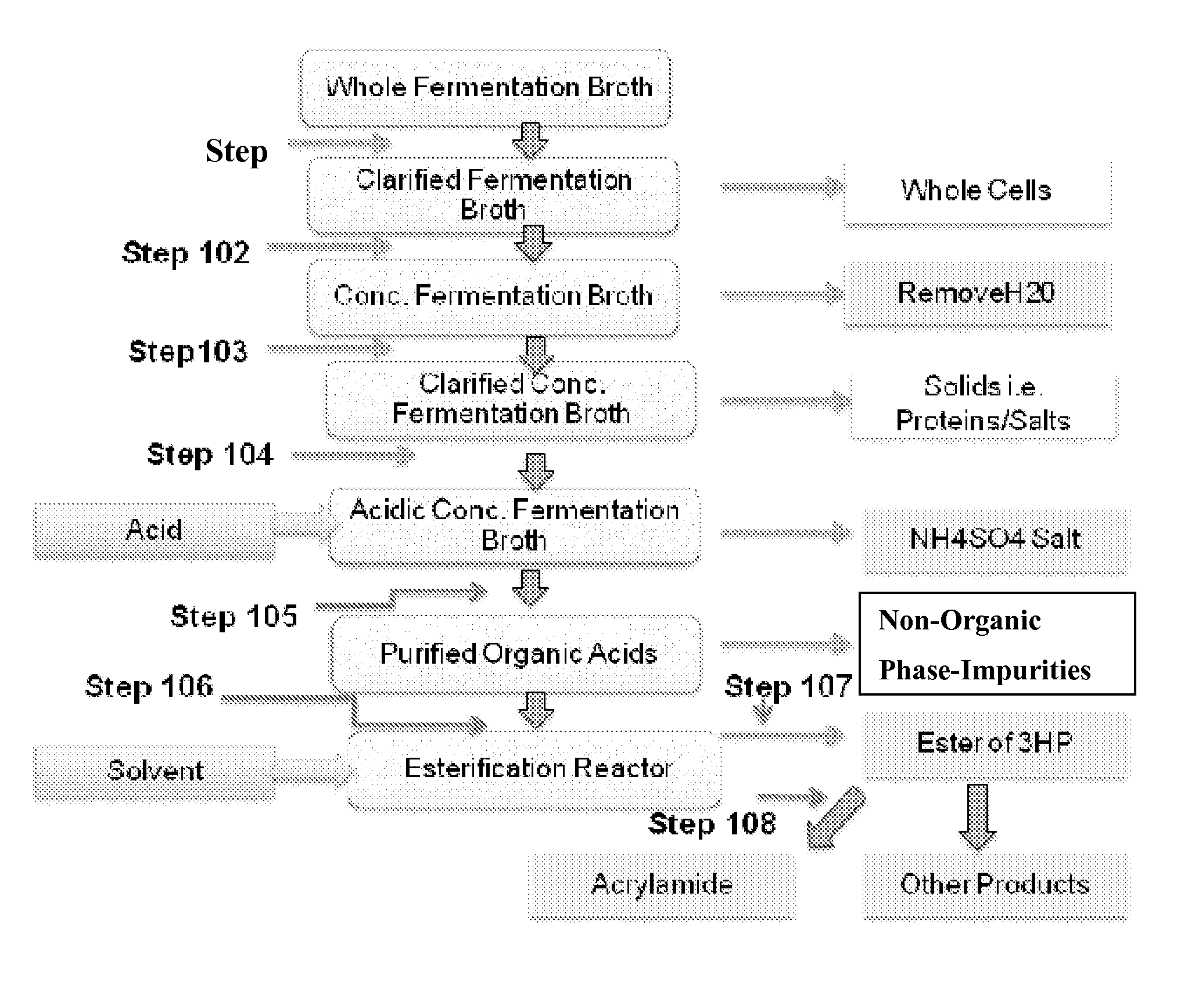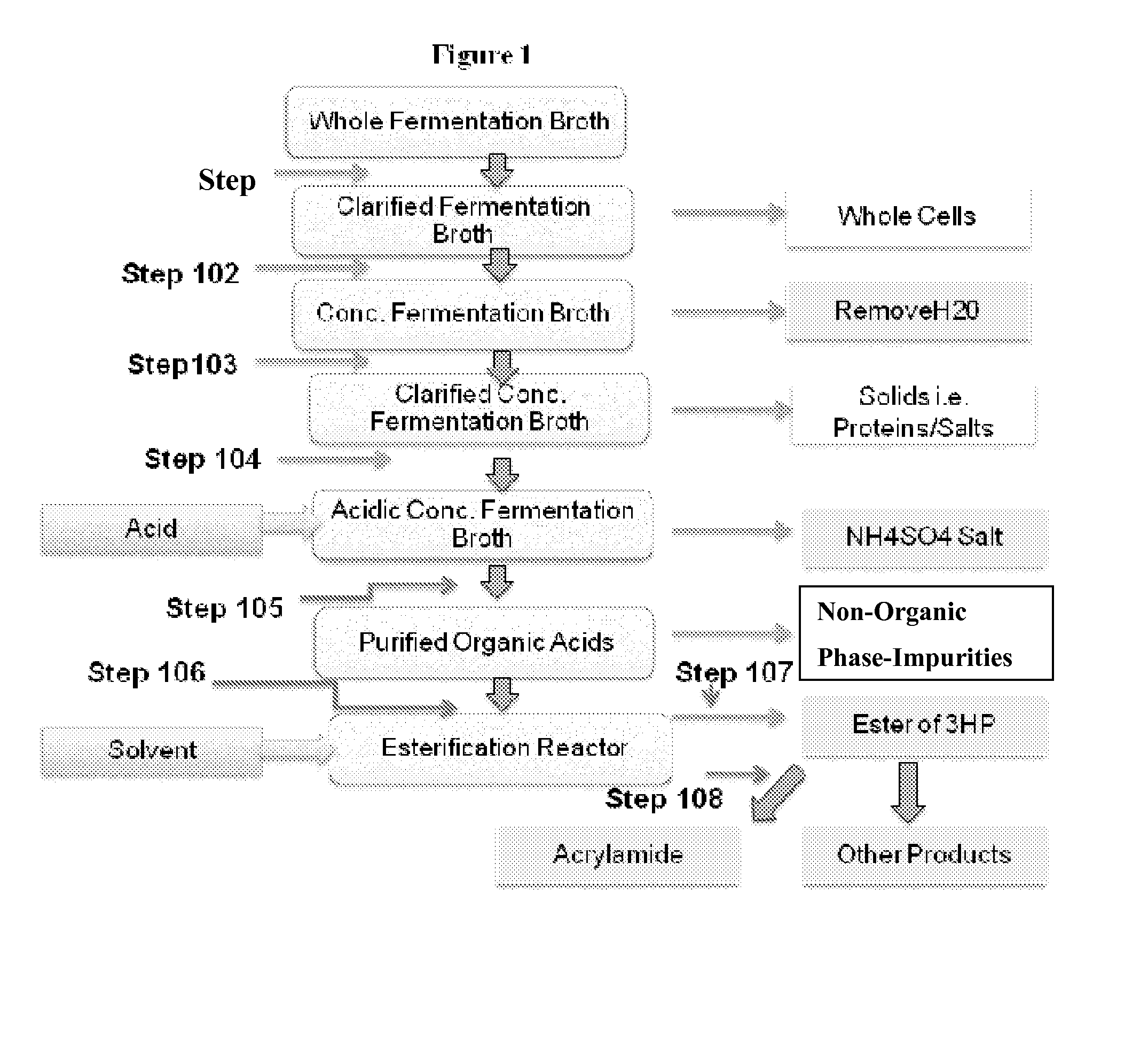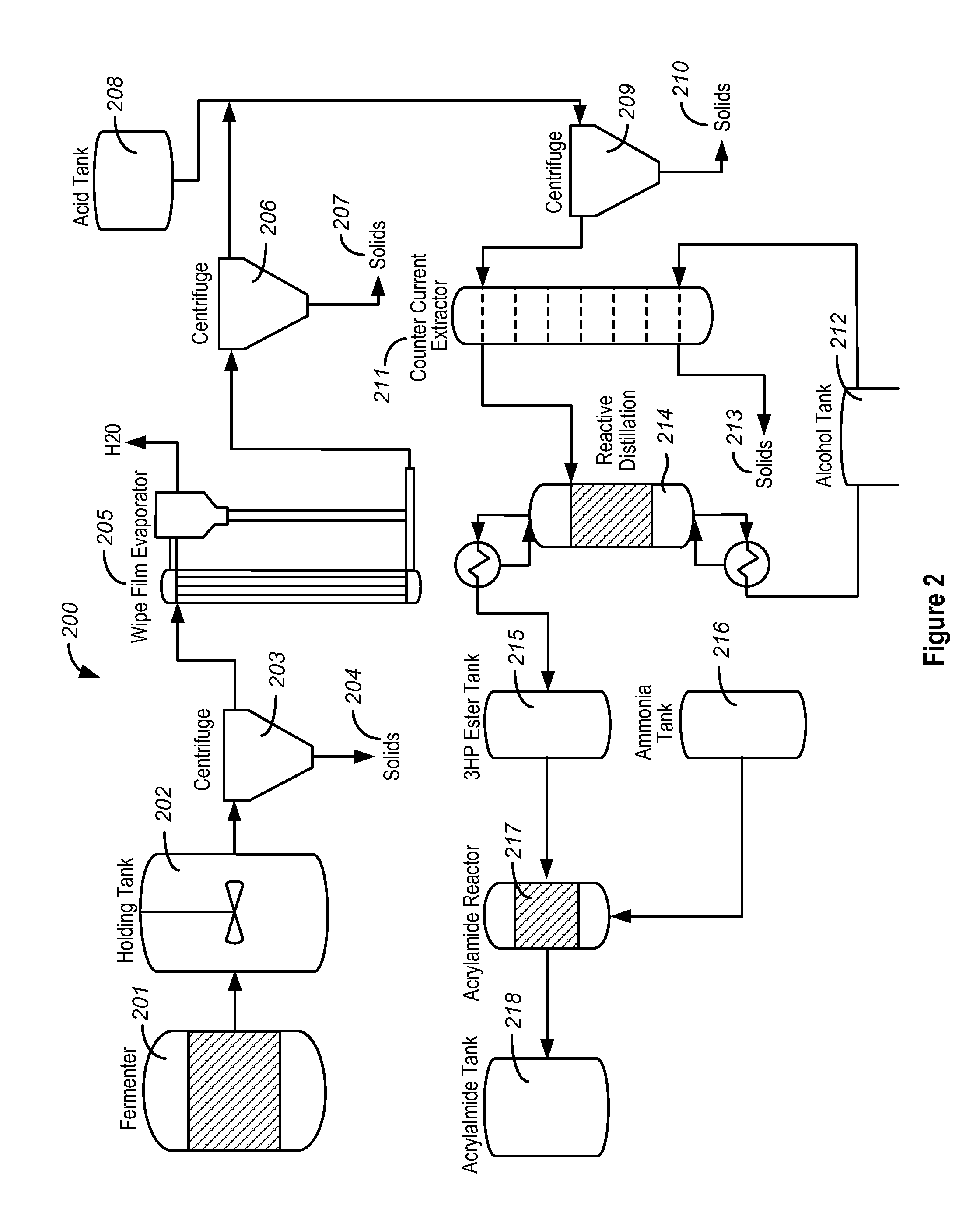Purification of 3-hydroxypropionic acid from crude cell broth and production of acrylamide
- Summary
- Abstract
- Description
- Claims
- Application Information
AI Technical Summary
Problems solved by technology
Method used
Image
Examples
example 1
Step 101
[0098]A neutral pH fermentation broth was centrifuged (for example at 3250 G or greater) for at least 5 minutes to remove whole cells.
Step 102
[0099]Water in the clarified fermentation broth was removed by evaporation. This was conducted by decreasing the pressure and / or heating the solution. A pressure of 60 mbar at 60° C. was effective. In addition, an atmospheric pressure at 100° C. was also effective. The distilled water could then be re-used in the fermentation process.
Step 103
[0100]After the removal of water, precipitated solids such as salts and proteins were separated either during the concentration using a scraped drum evaporator or after the concentration in a separate step using centrifugation or filtration to give a clarified concentrated fermentation broth. The solids obtained were washed with an organic solvent such as an alcohol to improve the recovery of 3-HP.
Step 104
[0101]The clarified concentrated fermentation broth was acidified with sulfuric acid to give a...
example 2
[0106]FIG. 2 outlines an example of producing 3-HP with system 200. System 200 includes a fermenter 201, a holding tank 202, three centrifuges 203, 206 and 209, a wiped film evaporator 205, an acid tank 208, a counter current extractor 211, an alcohol tank 212, a reactive distillation apparatus 214, a 3-HP ester tank 215, an ammonia tank 216, an acrylamide reactor 217 and an acrylamide tank 218. Although various components of system 200 are described below and depicted in FIG. 2, the components need not necessarily all be present, and in some cases may be present in a different order than the order shown in FIG. 2.
[0107]3-HP is produced by bacterial cells during a fermentation process in the fermenter 201. The concentration of 3-HP may be in a range of 2-200 g / L, or at least 10 g / L. The whole cell broth from the fermentation process is transferred to the holding tank 202 prior to feeding into the centrifuge 203. The broth is centrifuged at 3250 G for 5 minutes or 1 million G for les...
PUM
| Property | Measurement | Unit |
|---|---|---|
| temperature | aaaaa | aaaaa |
| pressure | aaaaa | aaaaa |
| boiling point | aaaaa | aaaaa |
Abstract
Description
Claims
Application Information
 Login to View More
Login to View More - R&D
- Intellectual Property
- Life Sciences
- Materials
- Tech Scout
- Unparalleled Data Quality
- Higher Quality Content
- 60% Fewer Hallucinations
Browse by: Latest US Patents, China's latest patents, Technical Efficacy Thesaurus, Application Domain, Technology Topic, Popular Technical Reports.
© 2025 PatSnap. All rights reserved.Legal|Privacy policy|Modern Slavery Act Transparency Statement|Sitemap|About US| Contact US: help@patsnap.com



